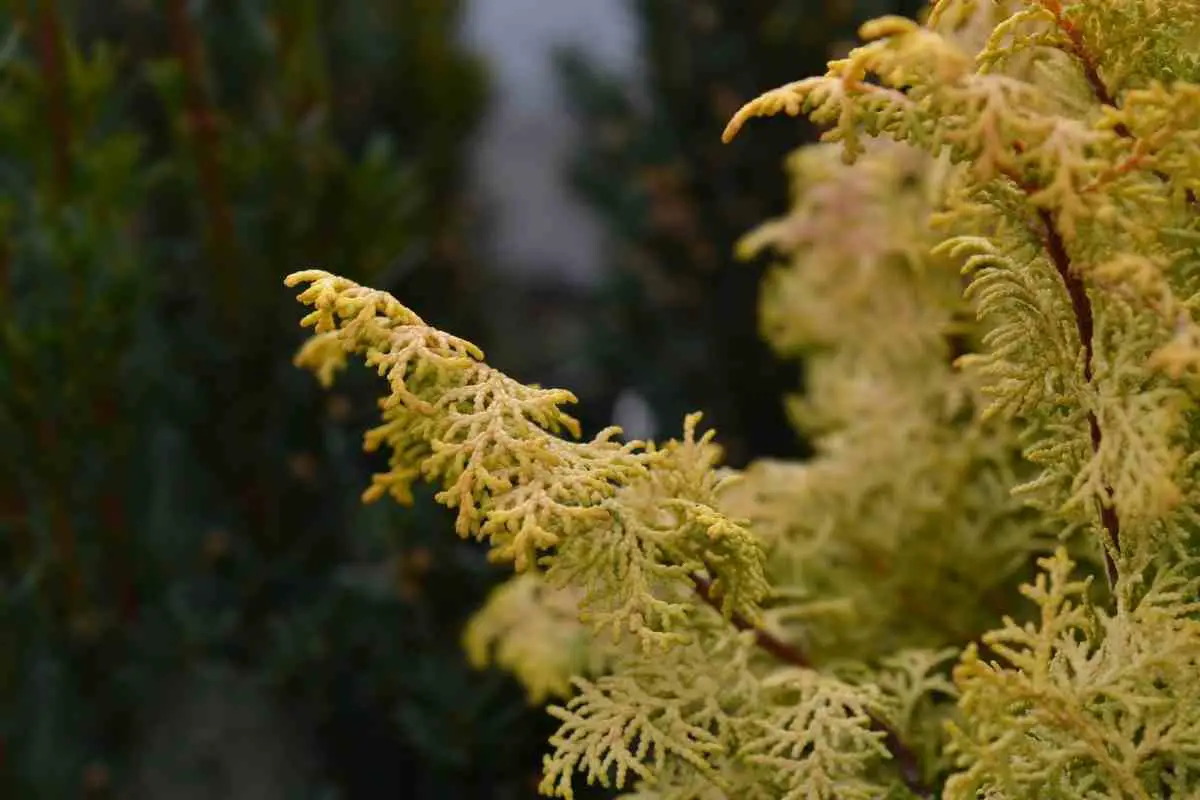If you’re a gardener, then you know that keeping your plants healthy is essential for having a beautiful garden.
One of the things that can happen to plants is that they may start to turn yellow.
If this happens to your Hinoki cypress, don’t worry – there are ways to fix it!
Healthy Hinoki Cypress
First, let’s take a look at what a Hinoki cypress is supposed to look like.
These evergreen trees are native to Japan and have lovely, lush green needles.
They can grow to be quite tall – up to 40 feet. Hinoki cypresses are also known for their beautiful, fragrant wood.
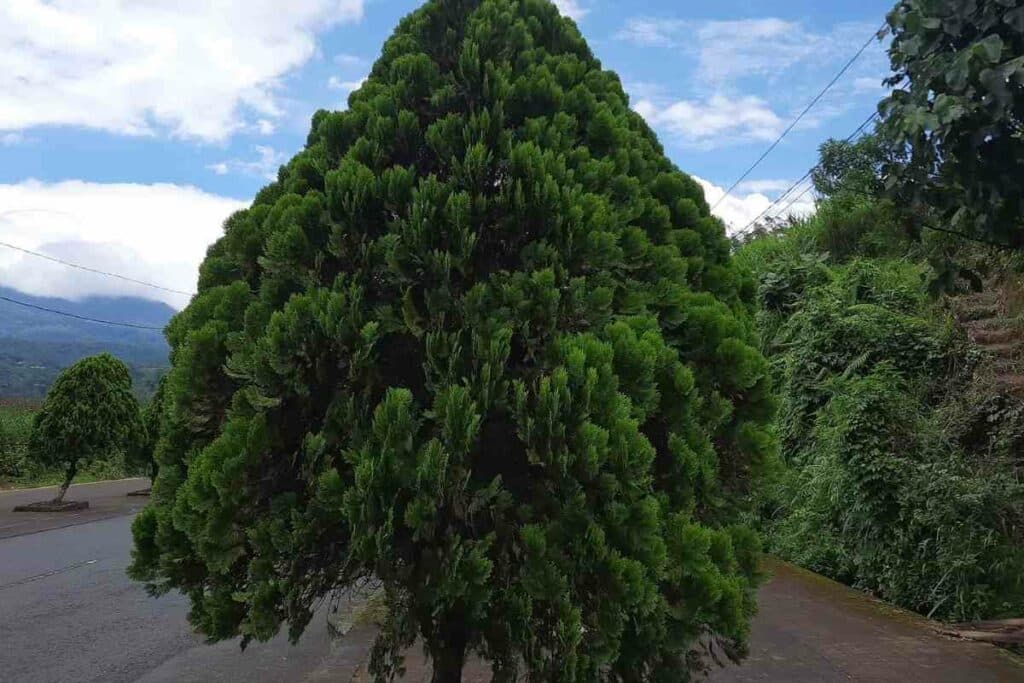
Using the USDA hardiness zones as a guide to make a similar map for Japan, the Hinoki cypress does the best in zones 7-10.
These zones in the U.S. include the west coast, east coast, and everything below Utah to Kentucky.
Reasons Hinoki Cypress Turns Yellow
There are a few reasons why your Hinoki cypress might be turning yellow.
It could be due to a nutrient deficiency, pests, or even poor drainage.
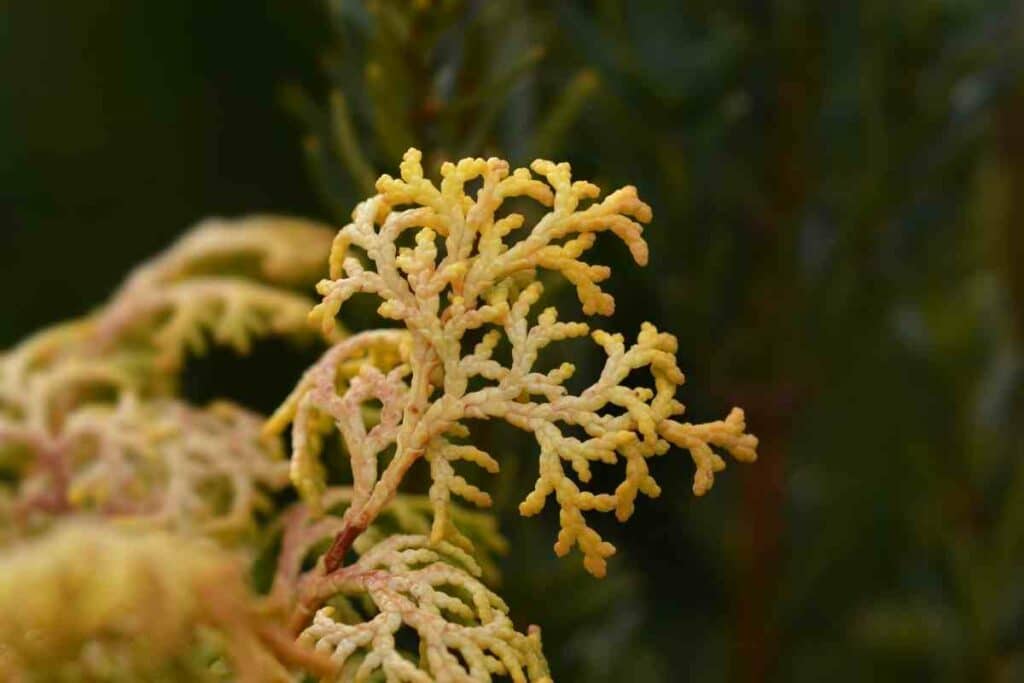
Let’s examine each of these possibilities a little closer.
Transplanted
Hinoki cypress trees do not like being uprooted and planted somewhere else.
This transition is too big of a shock on the system for these trees and if the roots stop absorbing water and nutrients, the plant will begin to turn yellow.
If you have recently transplanted your Hinoki cypress, then this is most likely the reason it is turning yellow.
Planting a young cypress tree is best since they are more resilient to being transplanted.
Nutrient Deficiency
One of the most common reasons for yellowing needles is a nutrient deficiency.
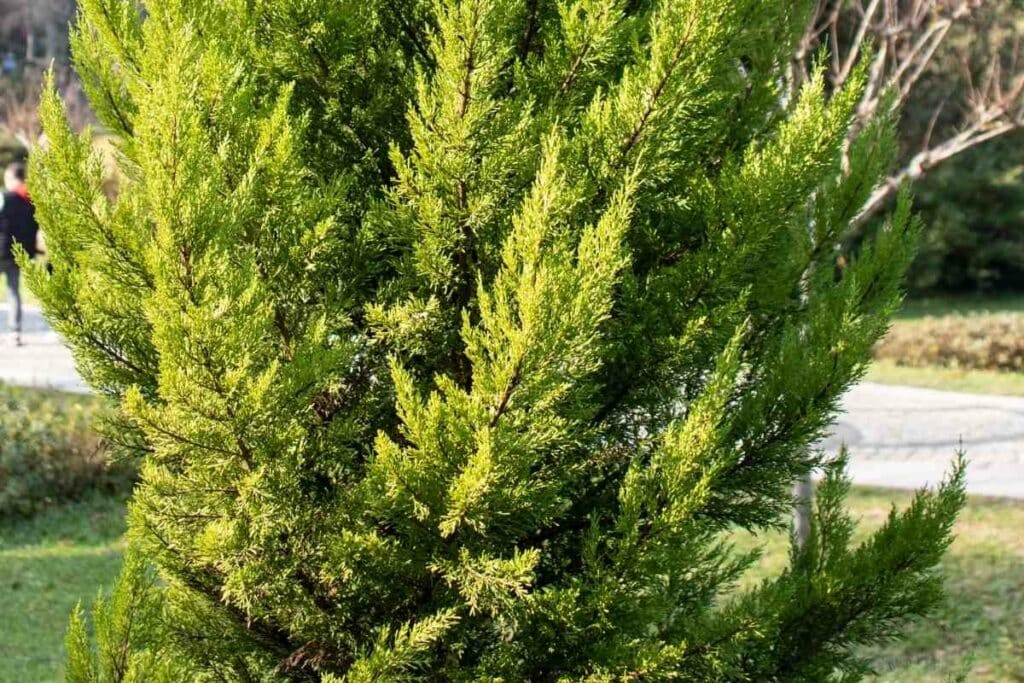
This is often caused by the soil not having enough of a certain element that the tree needs to stay healthy.
For Example – Iron is an essential nutrient for evergreens. If there’s not enough iron in the soil, the needles will turn yellow.
Poor Drainage
Poor drainage can also be a problem.
Hinoki cypresses like their roots to be in moist, but not wet, soil.
If the roots are constantly sitting in water, they will start to rot. This can lead to a variety of problems, including yellowing needles.
Pests
Another possibility is that pests are to blame.
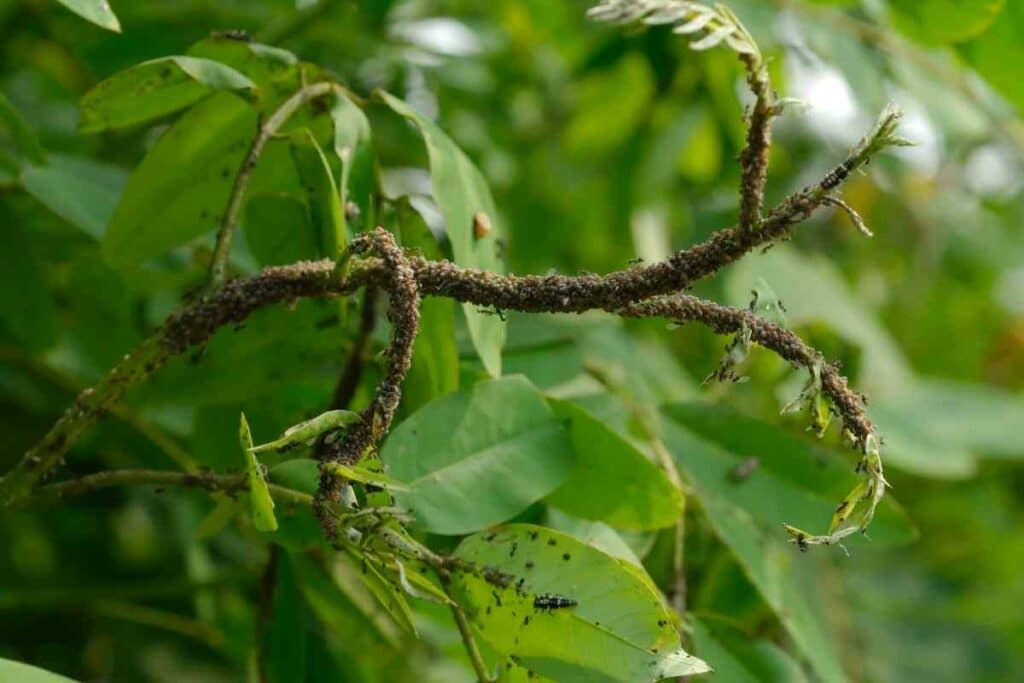
Aphids, for example, love to feast on Hinoki cypresses. If you see yellowing needles and also notice small, black bugs on the tree, then aphids might be the problem.
Scale can also cause yellowing needles. These pests suck the sap out of the tree, which can lead to nutrient deficiencies and yellowing needles.
Fungal Disease
Finally, another possibility is that your Hinoki cypress has a fungal disease.
One example is needle cast, which is caused by a fungus called Laricifomes officinalis.
This disease affects the new growth on the tips of the branches. The needles will turn yellow and then brown before falling off.
Proper Care for Hinoki Cypress
Now that we know some of the reasons why your Hinoki cypress might be turning yellow, let’s talk about proper care.
Soil
Hinoki cypresses require well-draining soil to grow successfully.
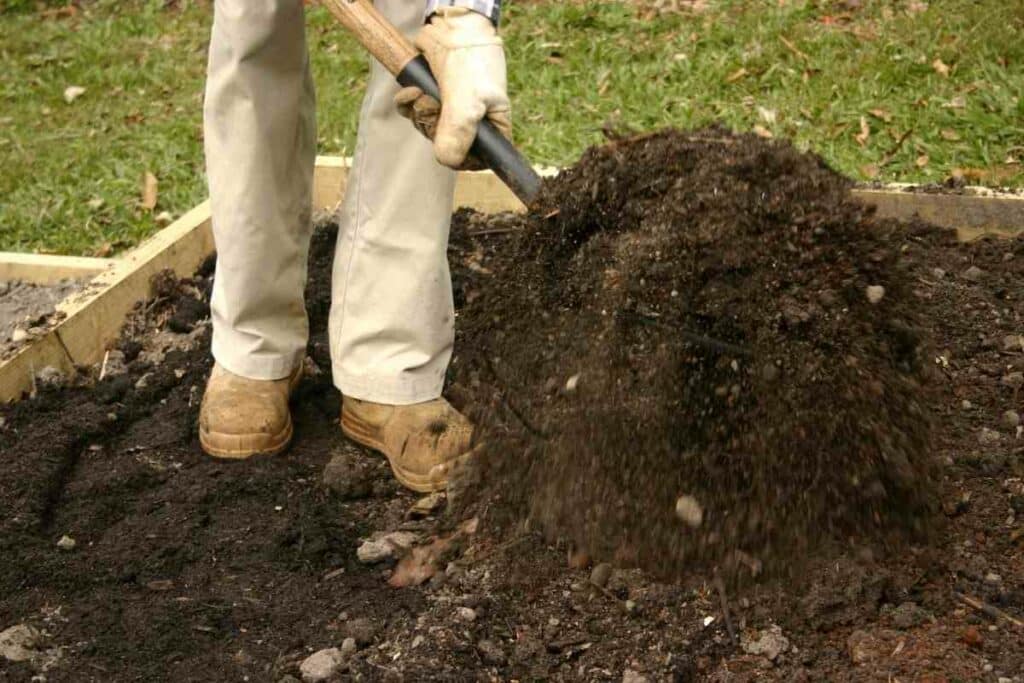
If they don’t have enough sand, perlite, or organic matter, the roots will stay wet and this can lead to problems with root rot diseases, especially in humid conditions.
As a Gardener – It’s important that you add more of these ingredients before you plant a Hinoki cypress.
Watering
These trees also need to be watered regularly, especially when they are young.
Once they are established, you can back off on the watering and provide an inch of water once a week during the growing season.
If the weather is particularly hot, you may need to water the Hinoki cypress tree more than once a week when the top inch of the soil feels dry.
Fertilizer
If you amended your soil with organic material before planting the Hinoki cypress tree, you shouldn’t need to add fertilizer.
If you’re noticing the needles turning yellow, you can give the tree an organic fertilizer that’s high in nitrogen.
You should only fertilize in the springtime when new growth appears.
Pest Control
To prevent pests from attacking your Hinoki cypress, you can use horticultural oil or neem oil.
These products will kill any pests that are on the tree and will also help to prevent new ones from showing up.
You can make a DIY insecticidal soap by mixing 1 cup of vegetable oil with 1 tablespoon of dish soap.
Add this mixture to a gallon of water and spray it on the Hinoki cypress tree, making sure to cover the entire plant. This mixture prevents aphids, whiteflies, and other pests from attacking the tree.
If you already have pests on your Hinoki cypress, you can use rubbing alcohol to kill them.
Works Best – Simply dip a cotton ball in the rubbing alcohol and apply it to the pests. You may need to do this several times to get rid of all the bugs.
Final Thoughts
So, why is your hinoki cypress turning yellow? There are a few possible reasons: nutrient deficiency, pests, fungal disease, and improper care. However, panicking isn’t going to help, but this article will.
It’s equally important to prevent your Hinoki cypress tree from turning yellow as it is to treat it once the yellowing has already started.
Proper care is essential for keeping this tree healthy. Make sure you plant it in well-draining soil and water it regularly, especially when it’s young.
You should also fertilize in the springtime and control pests with horticultural oil or neem oil. By following these tips, you can keep your Hinoki cypress tree looking its best.
